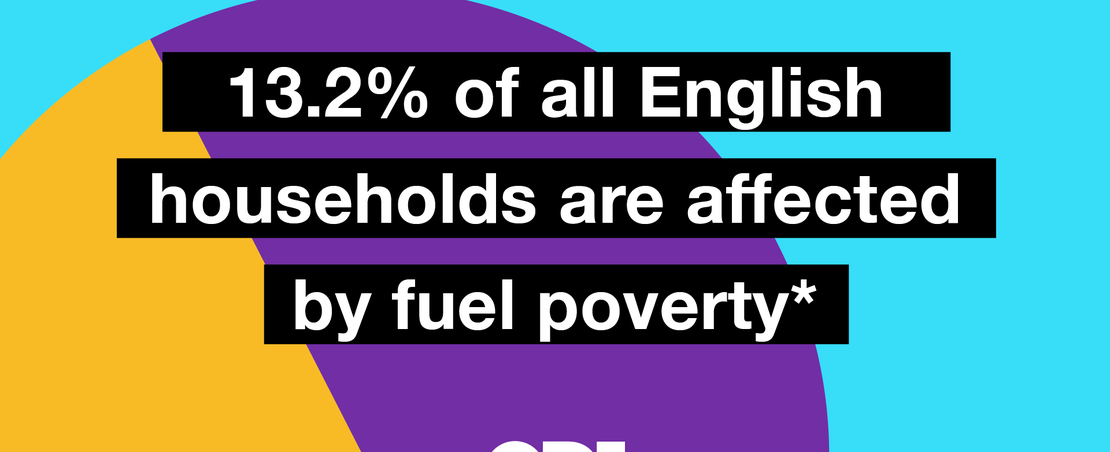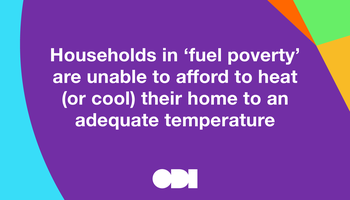
The Open Data Institute (ODI) has published a new report revealing the sections of society that are most affected by fuel poverty, as well as looking at the areas of the country where the problem hits the hardest. It paints a surprising picture of fuel poverty in England today, with renters, the young, large households, lone parents and those with young children disproportionately impacted.
The ODI has also announced its publishing of an annual fuel poverty risk index, which calculates a score that estimates the risk of someone being in fuel poverty for each local authority in England.
The fuel poverty risk index contains a graphic tool that can be used to highlight the impact of fuel poverty across England. This index will be updated annually and will be able to show the impact of changes such as the end of universal help with bills in April 2023, as well as more targeted assistance to those on low incomes. Future updates could include data on Scotland, Wales and Northern Ireland as well as data from charities and those impacted by fuel poverty.
Lisa Allen, Director of Data & Services at the Open Data Institute said:
“Having an effective data infrastructure in place around fuel poverty would help to identify those who are in most need in a systematic way and could also highlight the longer term benefits associated with adequate investment in efforts to tackle fuel poverty. In turn, this would assist government, charities, and those households in need of assistance with bills or energy efficiency. It is important that this data is as up to date as is possible, so that decisions can be made in a timely manner and across factors. This could help decide which groups to target when offering support and how much investment in fuel poverty support is optimal given short and long term impacts.”
Who's affected by fuel poverty?
The ODI's Fuel poverty and data infrastructure report shows that fuel poverty impacts:
- 30.6% of households using prepay electricity meters
- 28.8% of households where the eldest occupant is 16-24 years old
- 27% of homes housing five or more people
- 26.5% of lone parents
- 25% of all privately rented households
- 20.4% of households with children aged 0-4 years
- 17.7% of couples with children
- 13.2% of all English households (3.16m households)
Households containing children, renters, larger households and younger adults are most likely to be at risk of fuel poverty, with the most surprising aspect of these findings being that the data points towards students and young workers sharing accommodation as some of the worst-affected. We traditionally think of older people as being more vulnerable to fuel poverty, but this new analysis of data shows that students and young people in houses in multiple occupation (HMO) are worse off.
Chloe Field, Vice President (Higher Education) at the National Union of Students (NUS) said:
“It is sadly no surprise that these findings show many students are at significant risk of fuel poverty this winter. Students have been telling us in their thousands that they are worried about choosing between heating and eating – and our own research has shown that the combined cost of rent and bills is the number one pressure on students’ budgets right now. Students are also uniquely constrained by hours spent studying, or by visa restrictions, in their ability to take on more work and increase their incomes.”
Families, and especially lone parent families, are identified as a high risk group, with 26.5% of all lone parent families at risk of fuel poverty, which is twice the national average. 17.7% of couples with children are at risk of fuel poverty, with those with the youngest children at the most risk (20.4% of those with 0- to 4-year-olds). Those who use prepayment meters are also more likely to be in fuel poverty, with 30.6% of households using prepay electricity meters and 27% of households using gas prepayment in fuel poverty.
Dan Wilson Craw, Deputy Director of Generation Rent said:
“Private renters are particularly vulnerable to fuel poverty, because neither they nor their landlords have enough incentive to improve the energy efficiency of their homes. Most landlords don’t get the benefit of lower bills, while tenants eligible for grants have no guarantee that they can stay in their home for the long term. To bring renters out of fuel poverty, we need higher minimum standards for the energy efficiency of private rented homes and better security of tenure.”
Simon Francis, Co-ordinator of the End Fuel Poverty Coalition, which is also part of the Warm This Winter campaign, said:
"Fuel poverty is a public health emergency this winter and this report shows the areas of the country that are suffering the most. Those areas of the country where energy use is high, poverty and ill health commonplace, and where there is a lack of mitigating energy efficiency measures in place, are in the eye of the storm.The better use of data could, for example, help planning for surges in demand on the NHS as people who are elderly, disabled or with pre-existing health conditions suffer from the complications of living in a cold damp home."
The West Midlands and Yorkshire and the Humber contain the highest proportion of households in fuel poverty (17.8% and 17.5% respectively), whereas London and the south of England have lower than average rates (all below 12%). Households in Blackpool have the highest potential for fuel poverty based on our index. Incomes in Blackpool are 27% below English average and the area has an above average proportion of the population in receipt of Universal Credit (15% in Blackpool versus 8% nationally). In addition, 73% of dwellings in Blackpool are classed as energy inefficient (below EPC Band C) which is above the national average (68%).
